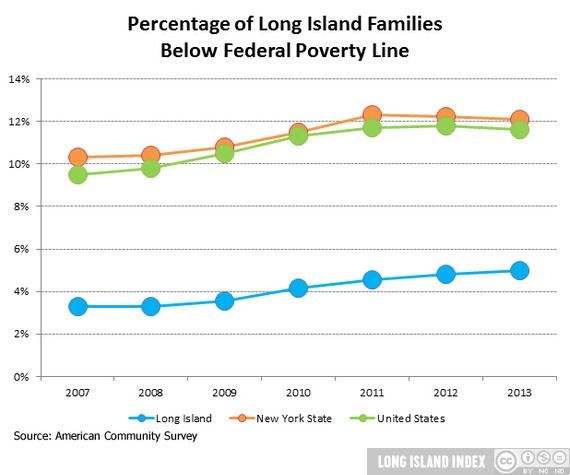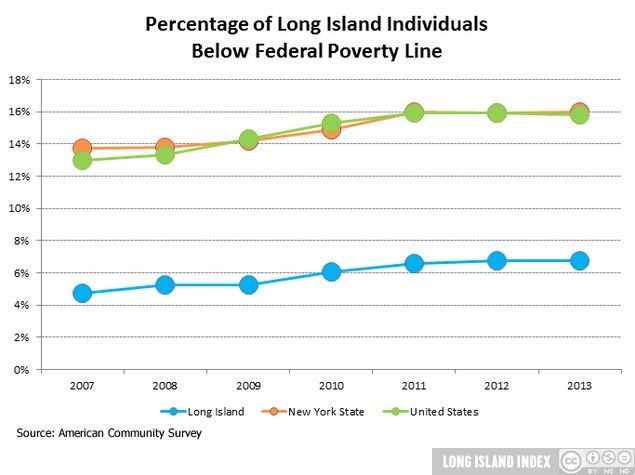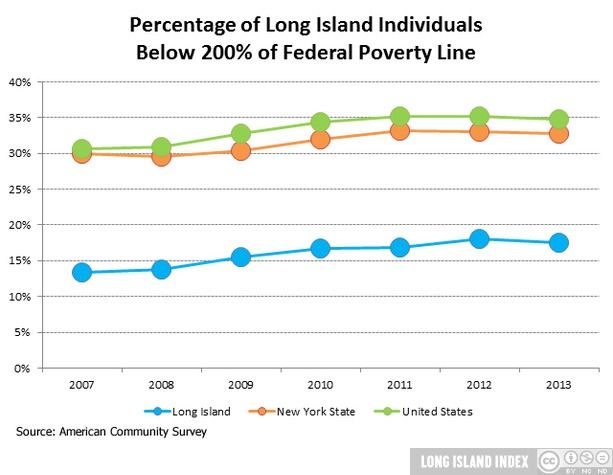Poverty rates increase dramatically.
Why is this important?
For both individuals and for families, the experience of economic hardship places greater strains on the quality of life in many aspects. The ability to obtain adequate shelter, nutrition, clothing, and education are directly tied to one’s economic situation.
How are we doing?
The Federal Poverty Threshold established by the Census Bureau for 2013 was $11,888 for an individual and $18,552 for a family of three. Long Island has lower rates of poverty than exists in New York State and nationally. In 2013, the poverty rate for individuals on Long Island was 6.7%. This compares with a NYS and national rates of 16%.
The trend between 2007 and 2013 reflects increasing poverty rates. There was a 43% increase in poverty through that period for Long Island. This contrasts with a 17% increase for NYS and a 22% increase for the U.S.
Family poverty followed a similar pattern, although the absolute rates are lower. In 2013, 5% of Long Island families were below the federal poverty line. The rate in 2013 was 50% higher than it was in 2007. In contrast, the 2013 rates for New York State, and the United States as a whole were 12%. Those figures were 17.5% and 22% higher than in 2007, respectively. These increases probably reflect the lasting impact of the great recession and the region’s and nation’s slow and uneven recovery.
The third chart plots the percentage of individuals below 200% of the poverty line. That threshold offers a perspective on the struggling near-poor. This group comprised 17.5% of the Long Island population and made a maximum of just under $24,000 per year in 2013. The percentage rose almost 34.5% between 2007 and 2012. The rate was relatively flat between 2012 and 2013.

Published 2015
Back to search results

